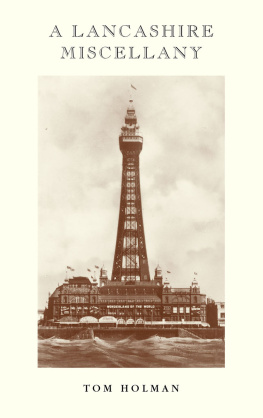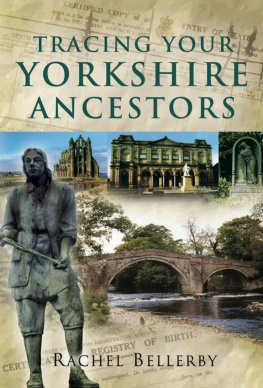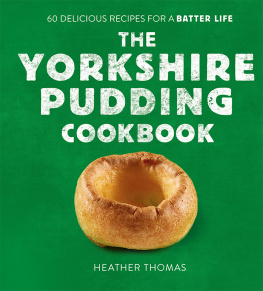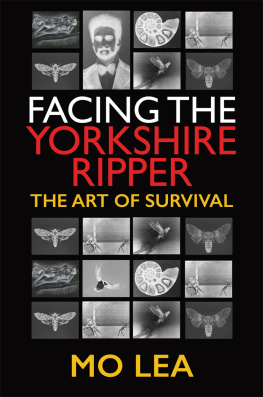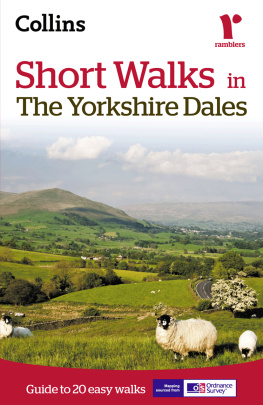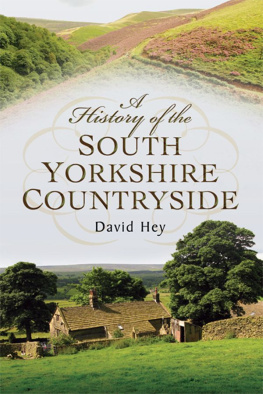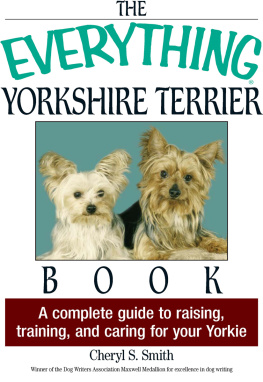A YORKSHIRE MISCELLANY

A YORKSHIRE MISCELLANY
TOM HOLMAN

For Mum and Dad
Frances Lincoln Limited
4 Torriano Mews
Torriano Avenue
London NW5 2RZ
www.franceslincoln.com
A Yorkshire Miscellany
Copyright Frances Lincoln Limited 2008
Text copyright Tom Holman 2008
First Frances Lincoln edition 2008
All rights reserved. No part of this publication may be reproduced, stored in a retrieval system or transmitted, in any form, or by any means, electronic, mechanical, photocopying, recording or otherwise, without either prior permission in writing from the publishers or a licence permitting restricted copying. In the United Kingdom such licences are issued by the Copyright Licensing Agency, Saffron House, 610 Kirby Street, London EC1N 8TS
ISBN 9780711228658
Printed and bound in Singapore
2 4 6 8 9 7 5 3 1

A TWO-MINUTE HISTORY OF YORKSHIRE
Yorkshire has had a fascinating, roller-coaster history, characterised in the thousand years or so between the departure of the Romans and the end of the Civil War by short, sharp upheavals followed by long periods of recovery and development.
Yorkshires Stone Age hunters and gatherers would have found the area covered in forests and full of wildlife. From a few thousand years BC the forests began to be cut down for farming, before the Bronze Age brought tools and weapons. Celtic settlers arrived in Yorkshire around 500 BC, and the Romans in AD 71. The Roman forts were gradually succeeded by towns including York, the capital of the Roman north, the place that gave Yorkshire its name, and its centre of gravity to this day. Though they had a substantial impact on Yorkshires infrastructure, the Romans were gone by the 5th century. Next came the Anglo-Saxons together with the arrival of Christianity and the start of trade, though life remained largely agricultural. And reasonably peaceful, too, until the Vikings landed, first raiding and then ruling Yorkshire for a century. They left Yorkshire with the word threthingr, meaning third part and later Riding, which was used to describe the three regions of Yorkshire: the North, West and East Ridings.
Harald Hardrada arrived from Norway in 1066, defeated by the English in some of the countrys most famous battles. William of Normandy became king, but soon faced a rebellion from Yorkshire that he brutally suppressed in the Harrying of the North. Recovering over the next few centuries, new towns, including Barnsley, Hull, Leeds and Sheffield, began to be established. The population rose, farming increased, and monasteries sprang up. But in the 14th century Yorkshire was hit by a triple whammy of famine, the Black Death and wars with the Scots. The next century brought the Wars of the Roses between the Houses of York and Lancaster, further decimating Yorkshires towns and population.
Another spell of recovery followed, with agriculture and trades like wool and cloth enriching the region. Henry VIIIs reformation and the dissolution of the monasteries brought more chaos, and in the 1640s Yorkshire was split by the Civil War. Over the next few centuries the identity and character of Yorkshire as we know it started to emerge. As industry flourished through the 18th century, towns sprawled and transport links improved, the railways in particular bringing previously remote areas much closer together. With heavier industries like coal and steel arriving, conditions in the towns and factories worsened, though by the late 19th century improvements to the water supply and public facilities were being made. More money and leisure accelerated the growth of seaside towns like Scarborough.
The decline of traditional industries into the early 20th century hit Yorkshire hard and forced it to find new ones. The Second World War brought more hardships and widespread bombing. Afterwards, immigration shook up Yorkshires demographics, and in 1974 the reorganisation of local government borders sliced up Yorkshires three Ridings into new counties for administrative purposes. These days Yorkshire is either broken down into its local authority regions or banded together with the Humber for statistical purposes.
Each of the rulers and visitors left their mark on Yorkshire, but its special identity has only strengthened over the centuries. Yorkshire has always been a state of mind as much as a physical entity, and loyalty to it is as strong as it has ever been.

THE YORKSHIRE CODE
The Yorkshire Ridings Society was set up in 1974 with the aim of preserving the identity of what its members consider to be the real Yorkshire after the reorganisation of county boundaries. The society still considers the county to be made up of the North, East and West Ridings and campaigns for Yorkshire proper to be accurately represented on maps, road signs and addresses. The society also drew up The Yorkshire Code, seven tenets by which its members agree to stand.
Areas administered by local councils do not replace Yorkshire - they are purely administrative areas and can be altered or abolished at any time.
Never refer to the abolition of the Ridings of Yorkshire - this is not true.
Always use Yorkshire correctly - meaning the geographical county that has existed for over 1,100 years.
Wherever you live in Yorkshire, use a Yorkshire postal address, including the postcode.
Ensure that maps show the geographical boundaries of Yorkshire as well as the administrative ones. The Yorkshire borders are permanent.
If you are a Yorkshireman or woman, always insist on your Yorkshire rights.
Ensure that children are taught the truth about Yorkshire and are not denied access to their heritage and identity.

TEN AMUSING PLACE-NAMES
Some unusual places across Yorkshire, all featured on Ordnance Survey maps, to the amusement of visitors if not the people who live there.
Blubberhouses (in the Washburn valley)
Booze (in Arkengarthdale)
Crackpot (in Swaledale)
Giggleswick (near Settle)
Idle (near Bradford)
Jump (near Barnsley)
Kettlesing Bottom (near Harrogate)
Land of Nod (near Holme-on-Spalding-Moor)
Wetwang (near Driffield)
Wham (near Settle)

THE STORY OF THE FLAT CAP
If theres one item of clothing that has identified Yorkshiremen most closely over the years, its the flat cap.
The classic cap is made of wool or tweed, with a little brim at the front and a higher peak at the back. Some say its use can be traced back as far as the 15th century, but it undoubtedly had its heyday in the industrial England of the 19th and early 20th centuries, when the vast majority of working-class men wore one virtually all the time. Flat caps can be seen on every head in photos from the times of mills and factory gates, as well as of sporting events. Featherstone Rovers, a rugby league team in west Yorkshire, is still widely known as The Flat Cappers after the days when every fan donned one.


